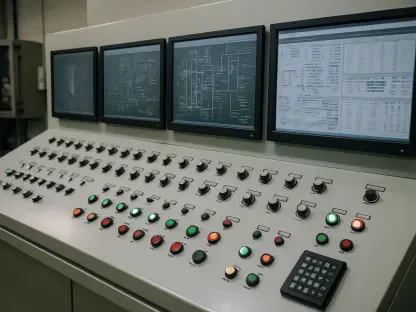The advancement of technology continues to reshape industries across the globe, with cordless power tools being no exception. The sector, once characterized by straightforward functionality, is undergoing significant transformation due to the integration of smart features like Bluetooth connectivity and smartphone applications. These innovations allow for seamless interaction and management, driving efficiency, usability, and control to new heights. As market dynamics evolve, these innovations are becoming integral to the competitive landscape, resulting in emerging trends that promise to reshape how tools are used in both residential and professional settings.
Industry Trends and Technological Advancements
Smart Connectivity and Enhanced Usability
The introduction of smart features in cordless power tools has emphasized connectivity and user-centric design. Devices equipped with Bluetooth and app-based interfaces enable users to track performance data and customize settings. This technology not only enhances operational efficiency but also allows for remote management, ensuring optimal performance across different tasks. Manufacturers have recognized this shift in demand toward more interconnected devices, prompting a wave of innovations that prioritize user interaction with device functionality.
Additionally, the application of Industry 4.0 technologies in manufacturing has enabled mass customization of cordless power tools. This trend allows for more tailored products that meet specific user needs, giving companies a competitive edge. By leveraging IoT capabilities, companies are producing tools that offer real-time feedback and diagnostics, allowing for preventive maintenance and reducing downtime significantly. These technological advancements are setting new benchmarks for what constitutes an efficient, user-friendly tool and are reshaping consumer expectations and industry standards alike.
Sustainable Practices in Manufacturing
With growing environmental concerns, leading power tool manufacturers emphasize sustainability in their production processes. Initiatives like Bosch’s commitment to integrating 30% recycled materials in production and Makita’s Green Initiative reflect a broader industry trend toward environmentally responsible manufacturing. Such efforts demonstrate a shift in corporate strategies, where sustainability is becoming as crucial as functionality and design. These practices not only address ecological challenges but also appeal to an environmentally conscious consumer base, aligning brand values with global sustainability efforts.
By aiming to reduce CO2 emissions and using recycled materials, companies not only lower environmental impact but also cut costs and resources used in production. For instance, Stanley Black & Decker aspires to manufacture half of its stainless steel products from recycled sources within the next few years, illustrating a long-term commitment to sustainability. These initiatives are essential as they enable the industry to align with international climate goals and remain relevant in a marketplace that increasingly values eco-friendly practices.
Market Dynamics and Challenges
Regional Market Dominance
North America maintains a dominant position in the global cordless power tools market, primarily due to the presence of key industry players such as Stanley Black & Decker, Bosch, and TTI. These companies have leveraged their market experience and innovative capabilities to set trends and capture significant market share. Meanwhile, Europe is witnessing growing demand, driven by increased construction activities and refurbishment projects that necessitate advanced cordless solutions. The regional market dynamics reflect how geographical trends affect demand and supply, shaping the future trajectory of the industry.
However, ongoing U.S.-China trade tensions have added complexity to market dynamics, impacting costs and availability of resources, thereby influencing pricing strategies. These challenges underscore the need for companies to adopt adaptive strategies and foster strong supply chain networks, ensuring resilience against geopolitical uncertainties. As companies navigate these challenges, their ability to innovate and meet evolving consumer needs will significantly determine their market positioning and long-term success.
Impact of AI and Automation
Artificial Intelligence (AI) and automation are instrumental in the next phase of cordless tool evolution, revolutionizing manufacturing and functionality. By integrating AI-driven demand forecasting, manufacturers can better gauge consumer tastes and refine production accordingly. This predictive capability can lead to optimized inventory levels and reduced wastage, contributing to the overall efficiency and profitability of operations. AI-enhanced tools are enabling more accurate and efficient resource allocation, aligning production closely with market needs.
Additionally, AI-enabled features in tools enhance precision and safety for users, opening avenues for more complex and demanding applications. Such advancements cater to professional users who need advanced functionality without compromising safety or ease of use. While these technologies offer immense potential, they also pose challenges related to implementation and maintenance costs. Companies must balance the benefits of integrating advanced technology with the associated expenses to fully capitalize on its transformative potential.
Future Outlook and Considerations
The rapid advance of technology is continuously reshaping industries worldwide, and the cordless power tool sector is no exception. This industry, once known for its basic functionality and simplicity, is experiencing a significant shift with the integration of smart features such as Bluetooth connectivity and smartphone applications. These technological innovations make it possible for users to interact seamlessly with their tools, offering enhanced management capabilities. This leads to greater efficiency, usability, and control over cordless tools. As market dynamics change, these innovations quickly become essential elements in the competitive landscape. This evolution is not just about keeping up with the latest technology but is also about influencing emerging trends that will undoubtedly alter how tools are used in both residential and professional environments. This technological integration makes tools smarter and provides users with an unprecedented level of control and functionality, marking a revolutionary shift in the industry.









